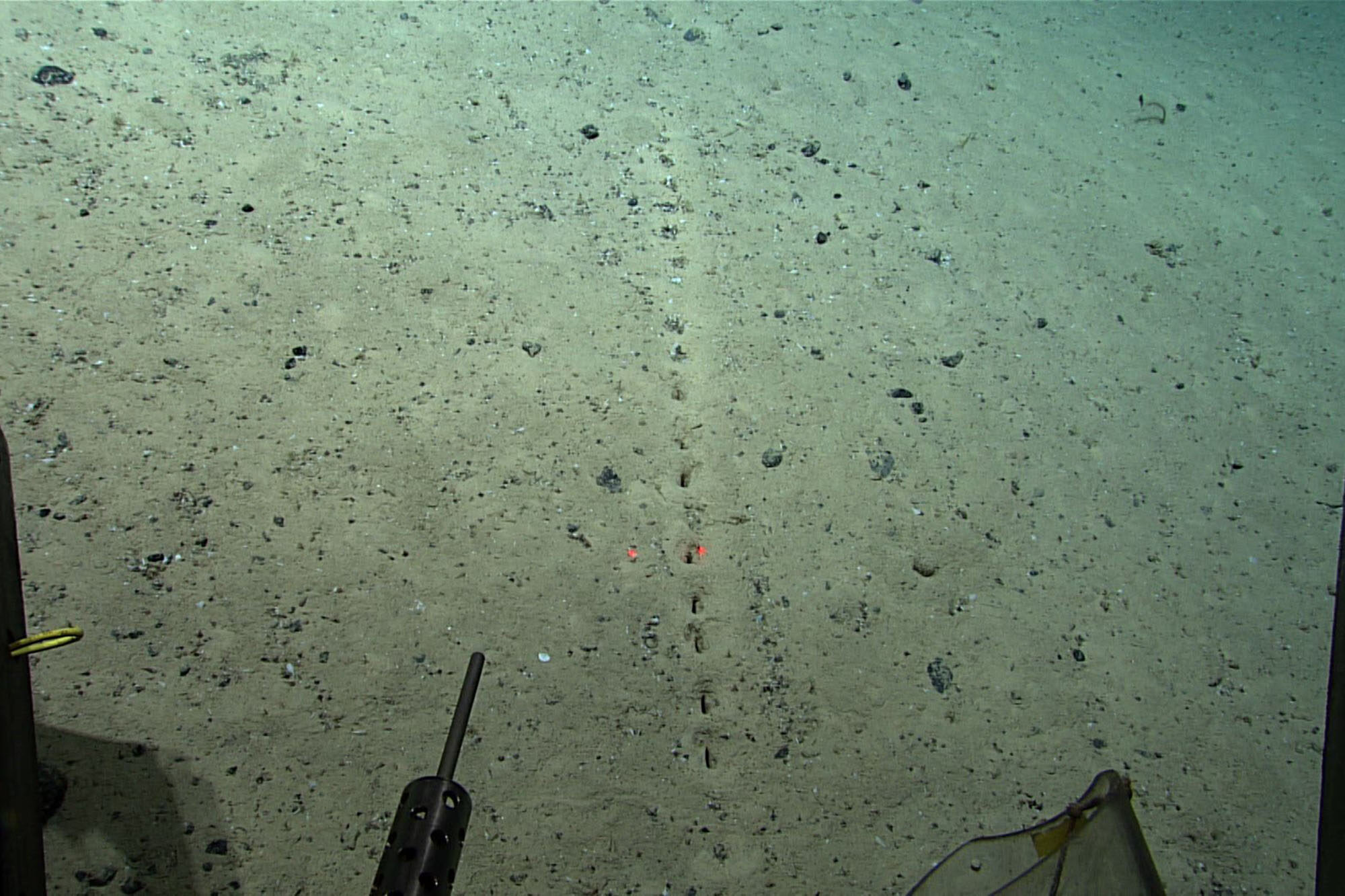Scientists have been left flabbergasted over a series of mysterious holes discovered this week at the bottom of the Atlantic Ocean.
The National Oceanic and Atmospheric Administration posted photos of the underwater formations on Facebook and Twitter, where sea-savvy social media users have postulated that they could be everything from "wormholes" to "aliens."
"Okay Facebookers, time to get out those scientist hats!" the NOAA declared in a statement regarding the pits, which are located 1.7 miles below the surface of the Atlantic Ocean near the Mid-Atlantic Ridge. This remote region is the world's longest mountain range, stretching 10,000 miles from the northern to southern points of the body of water.
Accompanying photos show the perplexing holes, which are aligned perfectly on the sediment of the ocean floor.
"On Saturday's #Okeanos dive, we observed several of these sublinear sets of holes in the sediment," NOAA described of the Atlantis-esque perforations. "These holes have been previously reported from the region, but their origin remains a mystery."

The scientists then asked Facebook oceanographers for their "hypotheses," which resulted in a treasure trove of wonderful and wacky theories.
Many comment section Captain Nemos suggested that the holes were created by some type of burrowing worm such as the "Bobbit worm," a "Dune"-evoking denizen of the deep that buries itself in sand or gravel and waits for its victims. When prey such as a fish passes, the critter snaps them up with its cartoonish scissor-like jaws and yanks them back into his hole at speeds of up to 20 feet per second. It then leaves a hole in the spot where it just fed.
Scientists agreed that the wormhole theory was definitely plausible. "Many organisms (e.g. sea worms, burrowing crustaceans and sea cucumbers) move into and through the sediment and disturb it - often in regular patterns - this is called bioturbation (biological disturbance)," Mike Elliott, professor of estuarine and coastal sciences at the University of Hull in the UK, told the Daily Mail. "Some burrow horizontally (like a mole) while ingesting organic matter in the sediment and then the tunnel may collapse behind them - that would give the pattern seen."
Although, he pointed out that if the mystery critter were a worm, you would usually "see mounds of egested sediment behind the animal although that could be the areas where the tunnel hasn't collapsed."
Others speculated that the holes were created by crabs, with one armchair aquatic scientist writing, "A previously unknown crab species which hides in rectangular holes and hunts in linear packs, waiting for prey to fall into their clutches."
Professor Elliott explained "a physical puncturing of the sediment from above (by a predator looking for prey in the sediment) could leave a regular pattern like this," citing the sewing-machine patterns left by wading birds on mudflat."
However, the scientist added that he didn't know if any "deep sea animals could do that." Perhaps they were created by the teeth of this dentally-endowed crab, which was inadvertently snared by Norwegian trawlerman Roman Fedortsov.
One Twitter user suggested that that the aquatic anomaly could be a "piece of pipe that was perforated and laying on the seabed," although this is unlikely as the Mid-Atlantic Ridge is largely unexplored by humans, per the NOAA.
Meanwhile, other deep-sea speculators chalked up the formation to gas pockets. However, while scientists explained that gas holes were definitely possible, they felt that they wouldn't leave such linear, equidistant patterns.
"Gases such as methane and hydrogen sulfide can build up in sediments and carbon dioxide seeps are common," said Professor Elliott. "These all leave pockmarks, but they are not usually as regular as these."
Dr. Chris Yesson, a research fellow at London's Institute of Zoology, said that animals were a far more likely culprit.
Of course, NOAA's query prompted plenty of silly responses as well, with one Facebook funnyman writing that the holes were created by a "transatlantic underwater sea bed cable, (internet, old phone cable, etc.)."
"I would say Star Fish doing cartwheels," joked another, while one comment-section biologist wrote that it was a "swordfish sharpening its bill."
Meanwhile, other conspiracy theorists said that the holes could be extraterrestrial in origin a la undersea crop circles.
"I'm not saying that it's aliens, but it's aliens," quipped one tinfoil hatter on the now-viral thread.
Here's hoping they aren't similar to the recently discovered Red Sea "deadpool," which kills nearly every creature that swims into it.




Reader Comments
on smaller Scale?
We know almost nothing that's really going on (or was, for that instance).. Good luck guessing, though
The sea floor is a mine field of evidence that is just waiting to destroy the misinformation and will eventually eventually expose the TRUTH with regards to previous civilisations.
regards Winternights3
as if humanity is some hive-mind combined super-computer - is there a googly-eyes smiley???
yeesh